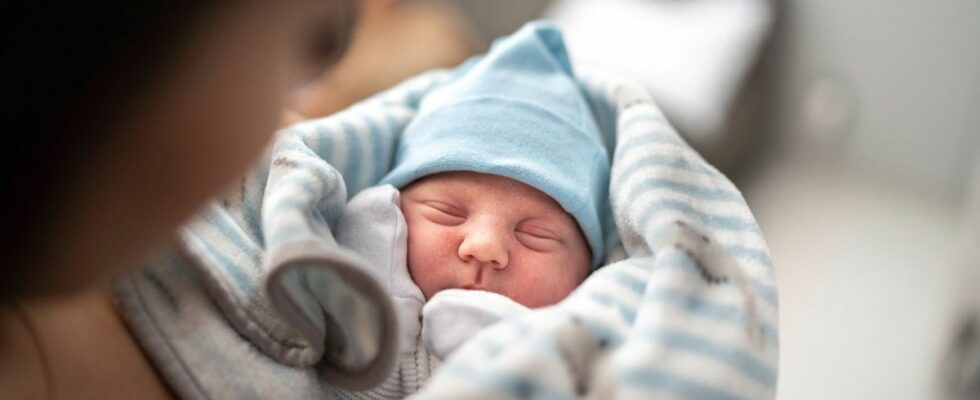Published on
updated on
Reading 3 min.
Fewer and fewer babies in France: the number of births falls over the first nine months of the year, after a marked decline in 2023, higher than the average for European Union countries, which can be explained by multiple factors.
Between January and September, the number of births fell by 2.7% compared to the same period the previous year, according to INSEE.
This decline is slowing down but it comes after a sharp decline in 2023: the number of births fell by 6.6% that year, falling below the symbolic bar of 700,000 for the first time since the end of the Second World War.
“To plan for parenthood, you must be filled with hope, but the current climate of uncertainty can weigh” on the decision of a couple to have a child, tells AFP Catherine Scornet, lecturer at the University of Aix-Marseille.
The context of war in Ukraine and the Middle East, as well as inflation and economic difficulties, can thus influence the choice of having or not having a child.
The decline in births in 2023 led President Emmanuel Macron to call for “demographic rearmament” of the country, sparking an outcry in the feminist ranks and the left, who saw it as an attempt to control women’s bodies.
The head of state had announced measures aimed at boosting the birth rate but these reform projects were put on hold by the dissolution of the National Assembly in June.
New aspirations
The 2023 dropout is part of a “long-term trend”, notes the National Institute of Statistics in a study published Thursday, confirming the figures announced in January. Since 2010, the number of births has declined each year, with the exception of 2021 which saw a slight rebound in the context of the health crisis.
Why have the French been having fewer and fewer children over the past decade?
On the one hand, the number of women aged 20 to 40, i.e. of childbearing age, has decreased. But above all, these smaller generations procreate less.
“We are observing changes in aspirations in terms of reproduction, today we can realize ourselves other than by becoming a mother or father,” comments Catherine Scornet. “Graduated women plan the most outside of motherhood.”
INSEE also notes that in 2023, the drop in births concerns women of all ages, including the oldest, for the first time since 2010.
Concretely, “we are observing an increase in the number of people who do not have children, which can be linked to less social pressure to have them”, estimates Didier Breton, associate researcher at the Institute, with AFP. national of demographic studies and professor at the University of Strasbourg.
In addition, “fewer couples than before are going from two to three children, probably due to a choice linked to material comfort,” he adds.
NO to diets, YES to WW!
End of the French exception?
The high number of families with three children was until now a French specificity, according to him. Today, France “becomes a European country like any other”.
In 2023, the decline in births in France in 2023 was greater than the average for European Union countries (-5.5%), where 3.7 million babies were born, according to the INSEE.
Last year, the number of newborns fell in 22 out of 27 EU countries.
The decline was particularly accentuated in all western EU countries: it went from -1.3% on average per year between 2019 and 2022 to -5.7% between 2022 and 2023. It also increased in the eastern EU countries, going from -4.5% on average per year between 2019 and 2022 to -9.3 between 2022 and 2023.
If we consider the fertility rate, however, that of France remains the highest in the European Union, with 1.79 children per woman in 2022, the last year for which this data is available.
Although it is falling, it remains well above the EU average, which reaches 1.46.
